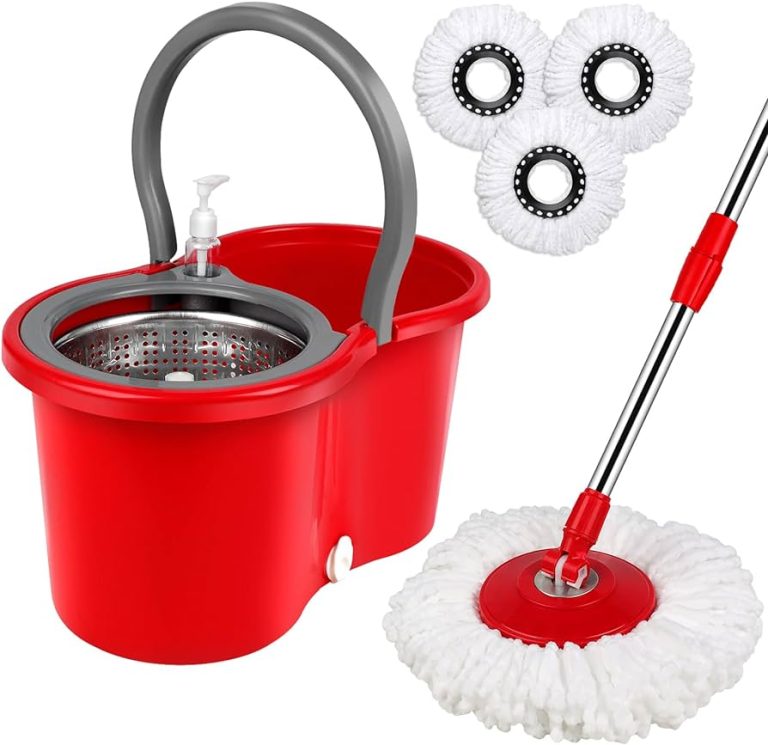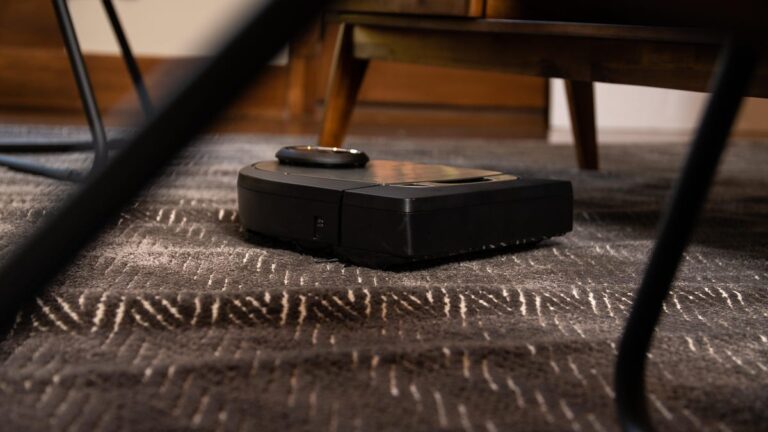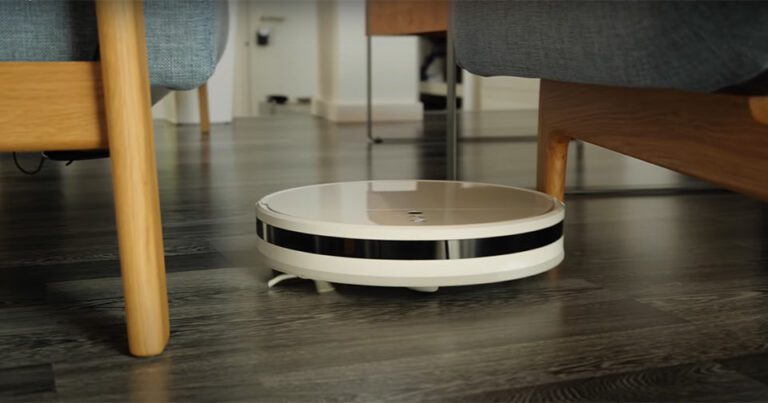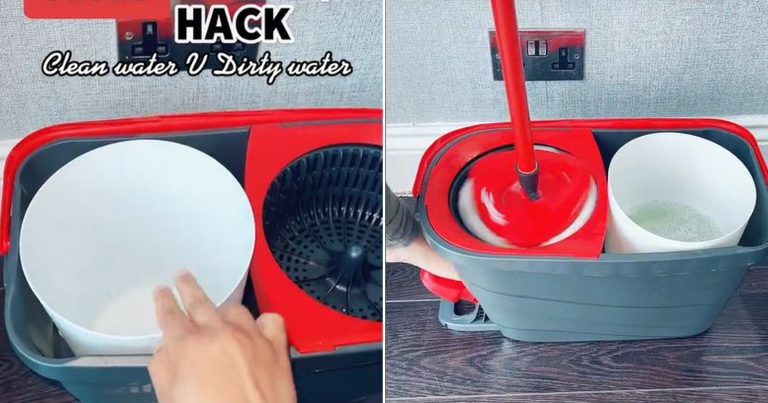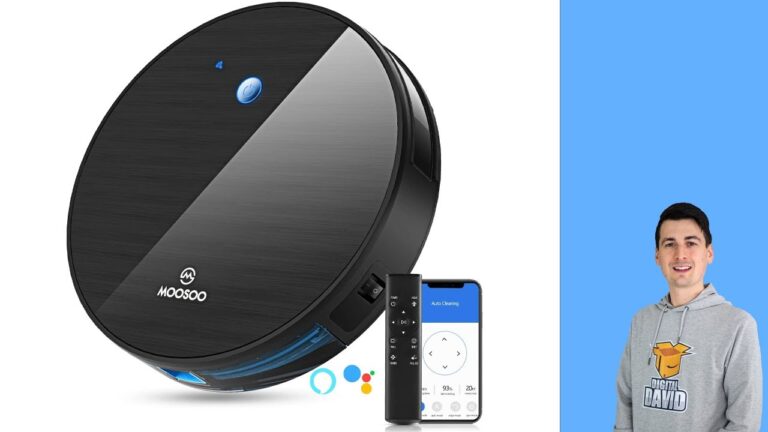How Robotic Vacuums Work?
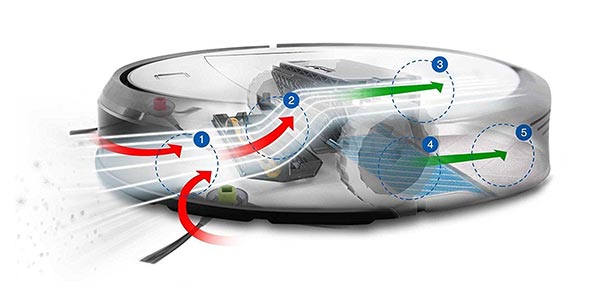
Robotic vacuums work by using sensors and algorithms to navigate a space and remove dirt and debris from the floor. These automated cleaning devices are equipped with brushes and suction mechanisms that suction up dirt and particles as they move across the floor.
They use sensors to detect obstacles and walls, allowing them to navigate around furniture and other objects. The algorithms in these vacuums ensure efficient coverage of the entire floor while avoiding falls and collisions. With the ability to automatically return to their docking station to recharge, robotic vacuums offer convenience and time-saving benefits for busy individuals.
Definition And Brief History
Robotic vacuums, also known as autonomous or automatic vacuums, are ingenious devices that clean floors without human guidance. These smart machines have revolutionized the way we keep our homes and offices tidy. With an interesting history dating back to the 1990s, robotic vacuums have undergone significant advancements.
These modern vacuum cleaners utilize advanced sensors and artificial intelligence to navigate and map the surroundings. They are equipped with brushes, suction power, and waste collection compartments. The introduction of robotic vacuums has simplified the chore of floor cleaning and saved precious time and effort.
Over the years, this technology has evolved, resulting in improved suction power, better battery life, and enhanced cleaning capabilities. With their compact design and ability to access hard-to-reach areas, these devices have become a popular choice for homeowners and businesses looking for convenient and efficient cleaning solutions.
Sensors And Navigation Systems
Robotic vacuums use a range of sensors and navigation systems to efficiently clean your floors. These intelligent machines are equipped with various types of sensors that help them navigate your home. One common type of sensor used in robotic vacuums is the infrared sensor.
This sensor helps the vacuum detect obstacles in its path and avoid collisions. Another type of sensor is the cliff sensor, which helps the vacuum detect stairs or ledges and avoid falling. In addition to sensors, robotic vacuums also rely on navigation systems to efficiently clean your floors.
These navigation systems use algorithms to map out the room and determine the most efficient cleaning path. By utilizing sensors and navigation systems, robotic vacuums can effectively clean your floors without requiring manual intervention.
Cleaning Mechanisms
Robotic vacuums utilize various cleaning mechanisms to effectively clean floors. Brushes and suction technology are key components that enable these robots to collect dirt and debris efficiently. The brushes, typically made of bristles or rubber, agitate the floor surface, dislodging dirt and directing it towards the vacuum intake.
Combined with the suction power, these robots are able to effectively pick up dust, crumbs, and other particles from different floor types. Additionally, robotic vacuums often come equipped with advanced filtration systems that capture fine particles and allergens, ensuring cleaner air quality within the home.
These filtration systems play a crucial role in improving indoor air hygiene. Overall, the cleaning mechanisms employed by robotic vacuums allow for effortless and thorough cleaning without the need for manual intervention.
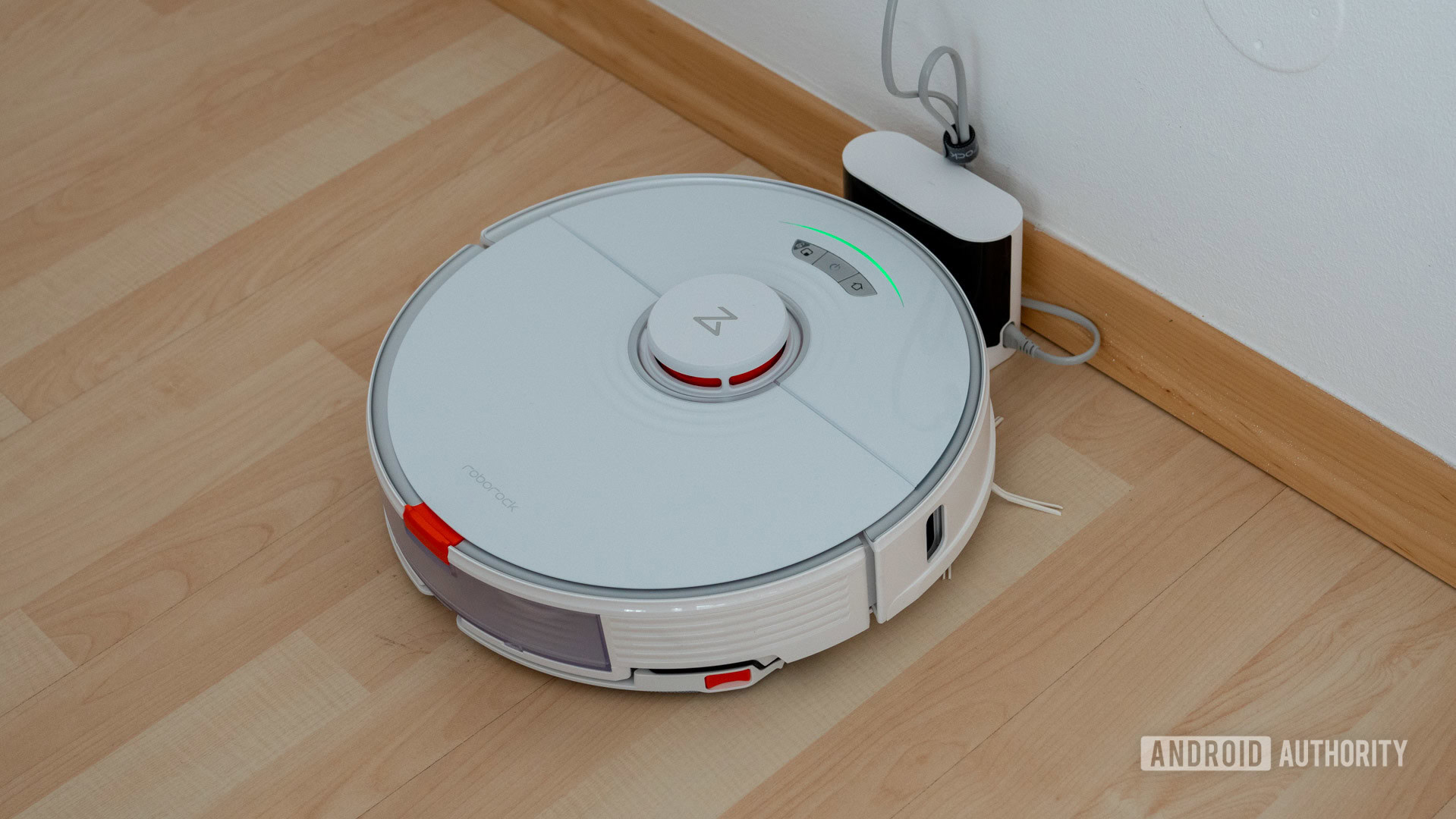
Credit: www.androidauthority.com
Mapping And Room Detection
Robotic vacuums use advanced mapping and scanning techniques to detect different rooms in your home. They rely on sensors and cameras to navigate and create a digital map of the area. These intelligent devices are equipped with a variety of sensors that help them identify obstacles and adjust their path accordingly.
Using laser or optical sensors, they scan the surroundings and detect objects, furniture, or walls. With the help of integrated algorithms, the robotic vacuum builds a virtual map of your home, allowing it to efficiently clean different areas. This mapping and room detection feature ensures that the device cleans every nook and corner without overlapping or missing any spots.
So, while you sit back and relax, the robotic vacuum intelligently moves from room to room, giving you a thoroughly clean home with minimal effort.
Cleaning Patterns And Algorithms
Robotic vacuums employ various cleaning patterns and algorithms to efficiently clean your floors. These cleaning patterns determine how the vacuum moves around your home, ensuring thorough coverage. Algorithms are the logic behind these patterns, guiding the vacuum in its cleaning path.
The most common cleaning patterns used by robotic vacuums include the random, straight line, and spiral patterns. Random pattern cleaning allows the vacuum to move in a random direction until it covers the entire area. Straight line pattern cleaning involves moving in straight lines and changing direction after each line.
Spiral pattern cleaning involves moving in a spiral motion from the center of the room to the outer edges. Through these patterns and algorithms, robotic vacuums are able to navigate obstacles, find their charging stations, and efficiently clean your floors.
Power And Battery Management
Robotic vacuums rely on various power sources for their operation. These sources include rechargeable batteries, which play a crucial role in the device’s power management. The battery life of a robotic vacuum is an important factor to consider, as it determines how long the device can clean before needing to be recharged.
Additionally, advancements in charging technology have made it more efficient to power robotic vacuums. Some models come with self-docking capabilities, allowing the vacuum to automatically return to its charging station when the battery is running low. This ensures that the device is always ready for the next cleaning session.
Battery life and charging technology are key aspects to consider when understanding how robotic vacuums work efficiently and effectively.
Obstacle Avoidance
Robotic vacuums have revolutionized cleaning tasks with their advanced technology. When it comes to obstacle avoidance, these devices face various challenges. One primary issue is sensor limitations and reliability. Despite their sophisticated sensors, robotic vacuums may struggle in accurately detecting obstacles.
This can result in collisions or incomplete cleaning. Furthermore, reliability issues can arise, with sensors sometimes failing to detect certain types of objects. As a result, the vacuum may either bypass the obstacle or collide with it, potentially causing damage.
Manufacturers continuously strive to improve sensor technology to enhance obstacle avoidance capabilities. By addressing these challenges, robotic vacuums can become even more efficient in cleaning our homes autonomously. With further advancements, we can expect robotic vacuums to navigate obstacles with exceptional proficiency in the future.
Cleaning Performance On Different Surfaces
Robotic vacuums have revolutionized the way we clean our homes, but their cleaning performance on different surfaces can vary. When it comes to carpets, these smart devices effectively remove dirt and debris, thanks to their powerful suction and brush systems.
On hardwood floors, robotic vacuums gently glide, sucking up dust and pet hair without causing any damage. However, challenges arise when it comes to other surfaces like tiles or high-pile carpets. The robotic vacuum’s effectiveness may decrease due to its inability to navigate uneven surfaces or deep clean intricate patterns.
Additionally, these innovative machines may struggle with larger debris or tangled cords. Nevertheless, manufacturers continue to improve their designs, incorporating advanced technologies to address these difficulties. As a result, robotic vacuums are becoming increasingly effective in cleaning various surfaces, making our lives easier and more convenient.
Maintenance And Troubleshooting
Robotic vacuums require regular maintenance and troubleshooting to ensure optimal performance. Cleaning the vacuum and replacing worn-out components are essential tasks. Regularly remove dirt and debris from the vacuum’s brushes, filters, and dust bins to prevent clogging. Inspect the brushes for any tangled hair or debris that might hinder their functionality.
Replace worn-out brushes and filters promptly to maintain efficient cleaning. Troubleshooting common issues such as navigation problems or charging difficulties can involve checking the vacuum’s sensors, ensuring proper placement of the charging dock, or resetting the device. By following these tips, you can keep your robotic vacuum in top shape and troubleshoot any issues that may arise, ensuring efficient and hassle-free cleaning for your home.
Advancements In Artificial Intelligence
Advancements in artificial intelligence have significantly impacted the development of robotic vacuums. Future models are expected to leverage AI for enhanced functionality. Predictions indicate that AI integration will revolutionize robotic vacuums by allowing them to adapt to different cleaning needs.
These intelligent devices will utilize AI algorithms to optimize route planning, ensuring comprehensive coverage of the entire area. Additionally, AI will enable robotic vacuums to recognize and avoid obstacles, providing a more efficient cleaning experience. Furthermore, future developments may include the ability to learn from user preferences, thereby customizing cleaning patterns to individual needs.
As AI continues to evolve, we can expect to see even more innovative features in robotic vacuums, making them an indispensable part of automated cleaning solutions. The possibilities are endless as AI redefines the way we clean our spaces.
Integration With Smart Home Systems
Robotic vacuums have become an integral part of smart home systems due to their enhanced automation and control features. These devices can be connected with various smart home devices, allowing users to conveniently control and monitor them. By integrating robotic vacuums with smart home systems, homeowners can effortlessly schedule cleaning sessions, adjust settings, and even command the vacuum using voice control.
This level of connectivity and compatibility elevates the user experience, making cleaning tasks more efficient and hassle-free. Whether it’s connecting the vacuum with smart speakers, smartphones, or home hubs, the integration ensures seamless communication and synchronization, creating a truly smarter home environment.
With robotic vacuums seamlessly blending into smart home systems, house cleaning has never been so effortless and convenient. Say goodbye to manual vacuuming and hello to a cleaner home with the touch of a button.
Potential Applications In Other Industries
Robotic vacuums have come a long way in recent years, and their potential applications in other industries are expanding rapidly. The adaptations of this technology in various sectors hold great promise for the future. From healthcare to hospitality, these machines are being used to improve efficiency, productivity, and safety.
In healthcare, robotic vacuums can help in the maintenance of clean and sterilized environments, minimizing the risk of infection. In retail and warehousing, they can automate floor cleaning, freeing up the workforce to focus on more complex tasks. Even in industrial settings, these robots can be utilized to efficiently clean large and potentially hazardous areas.
With continuous advancements and innovations, the possibilities for future adaptations of robotic vacuum technology in non-domestic settings are vast. As industries recognize the benefits of these machines, we can expect to see even more creative and efficient uses in the coming years.
Frequently Asked Questions On How Robotic Vacuums Work
How Does A Robot Vacuum Know Where To Go?
A robot vacuum knows where to go using built-in sensors and smart technology. These sensors detect obstacles, such as furniture and walls, and enable the vacuum to navigate around them. The vacuum also utilizes mapping technology to create a virtual map of the room or area it is cleaning.
This map helps the vacuum to remember the layout and avoid areas it has already cleaned. Additionally, some robot vacuums use cameras and lasers to scan the surroundings and detect any changes in the environment. This allows the vacuum to adapt and find the most efficient cleaning path.
With these advanced features, a robot vacuum can confidently and intelligently maneuver through your home, cleaning all the necessary areas while avoiding any potential obstacles.
Are Robot Vacuums Really Worth It?
Robot vacuums are definitely worth it. They are efficient in cleaning your floors and saving you time. With their advanced technology, they can navigate around obstacles and reach difficult areas. They work quietly and can be programmed to clean while you’re away.
Robot vacuums can handle different floor surfaces and adjust their suction power accordingly. They have sensors to detect dirty areas and focus on them. These vacuums are easy to use and maintain, with removable dustbins that are simple to clean.
Plus, they come with various features like scheduling cleanings, boundary markers, and smartphone connectivity. Investing in a robot vacuum can greatly reduce your housekeeping efforts and provide a cleaner living environment. So, if you want convenience and a spotless home, a robot vacuum is definitely worth considering.
Do Robot Vacuums Actually Have Suction?
Yes, robot vacuums do have suction. They use powerful motors that create suction to pick up dirt and debris. The suction is strong enough to clean various types of surfaces, including carpets, hardwood floors, and tile. The vacuum’s brushes agitate the dirt, allowing the suction to effectively remove it.
Some robot vacuums also have different suction settings, so you can adjust the power based on your cleaning needs. Additionally, robot vacuums often come with sensors and mapping technology to navigate and avoid obstacles, ensuring efficient cleaning. They can reach under furniture and clean hard-to-reach areas, making them a convenient option for keeping your home clean and dust-free.
Conclusion
Robotic vacuums represent a harmonious blend of technology and practicality, offering a glimpse into the future of household maintenance. Their ability to independently navigate and clean spaces showcases the progress in automation and artificial intelligence. As we embrace these smart devices, it’s fascinating to recognize how far technology has transformed mundane tasks into effortless experiences, making our daily lives more efficient and leaving us more time to enjoy life’s pleasures.
